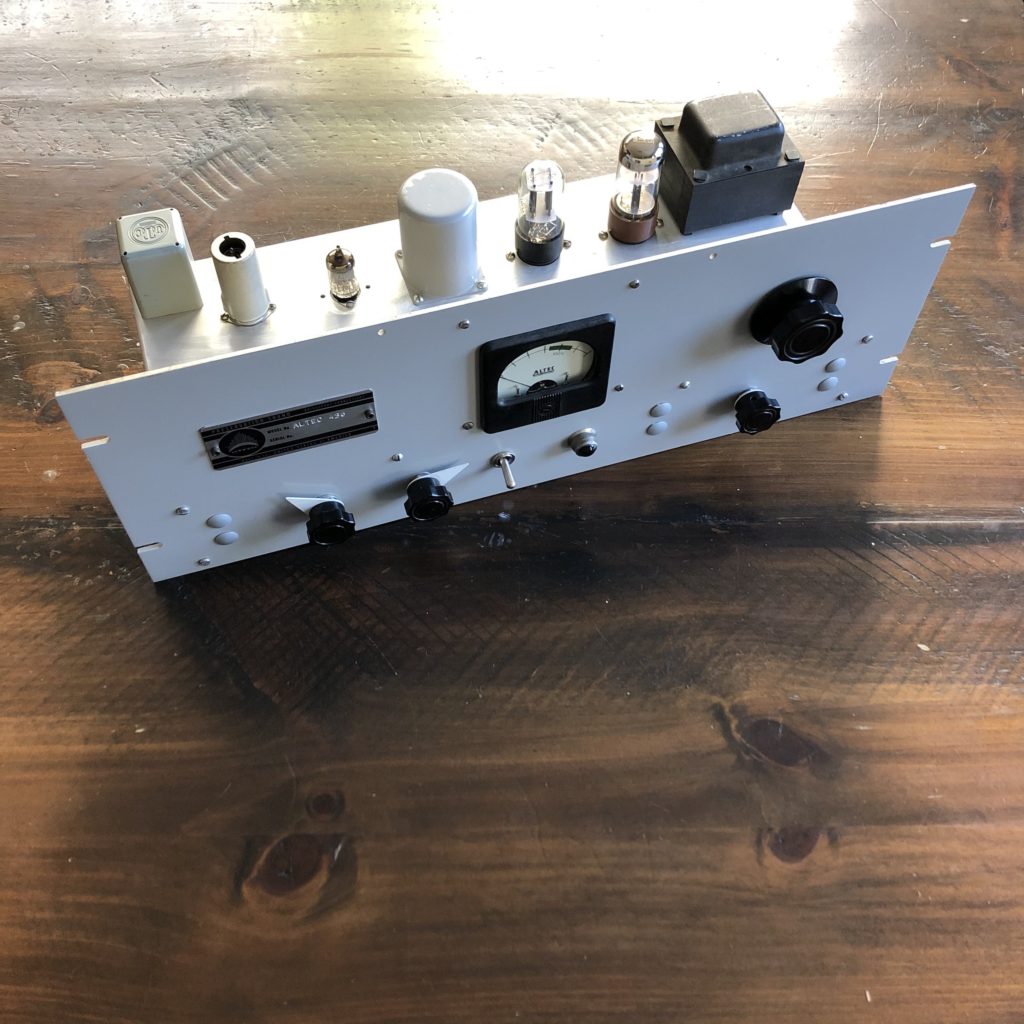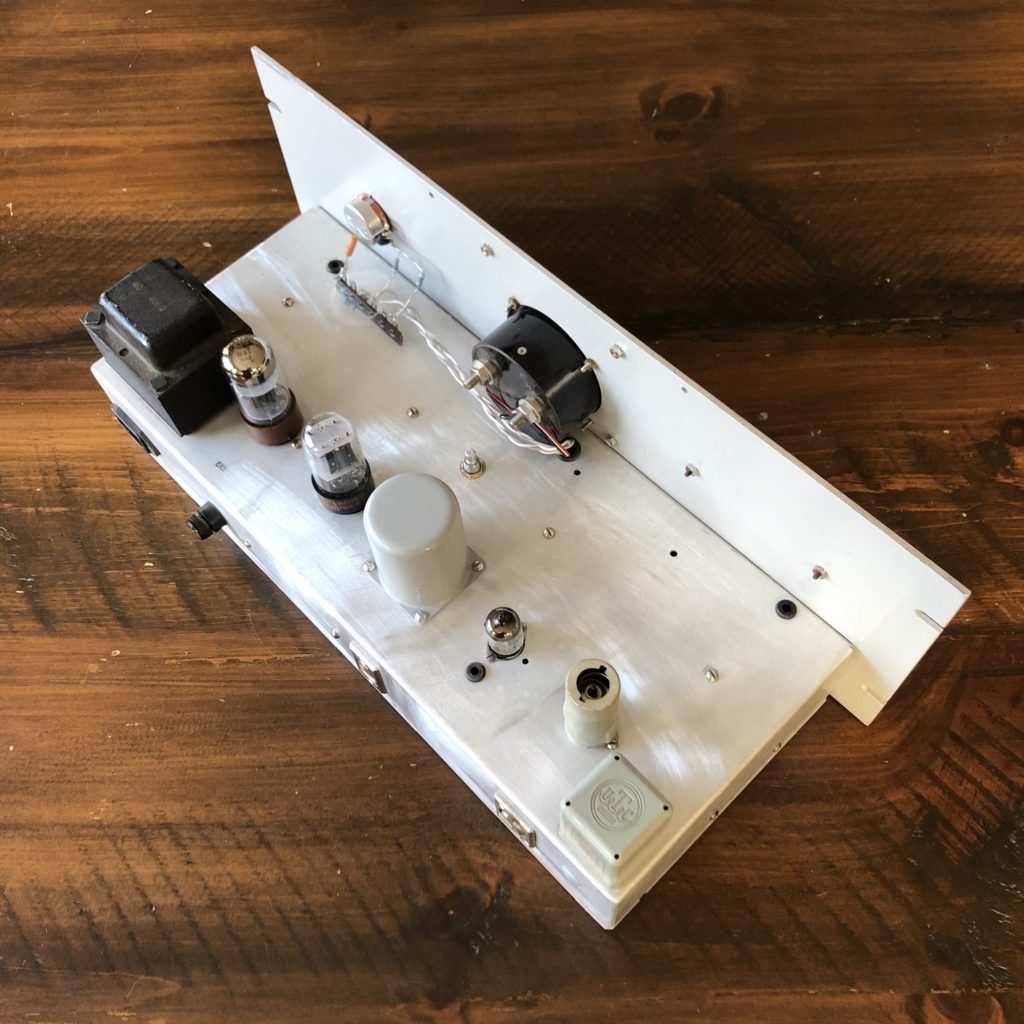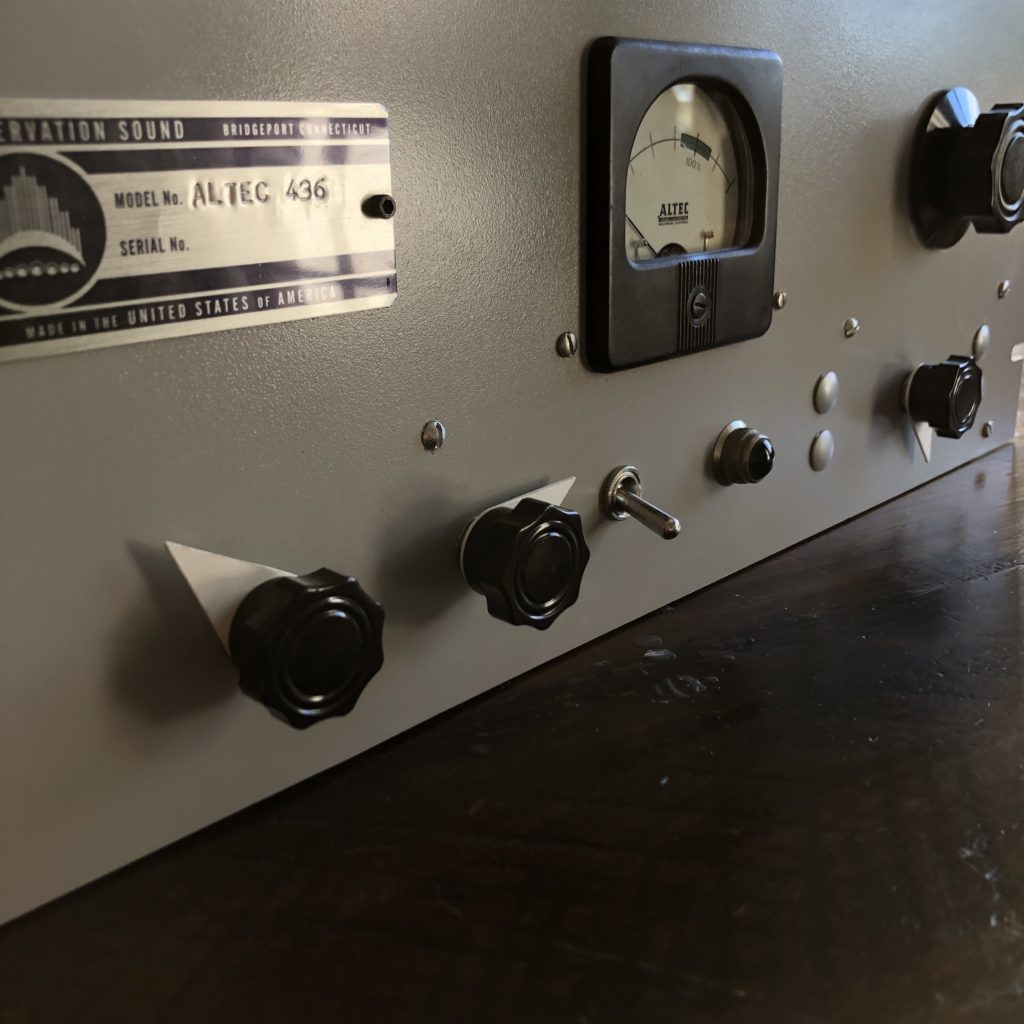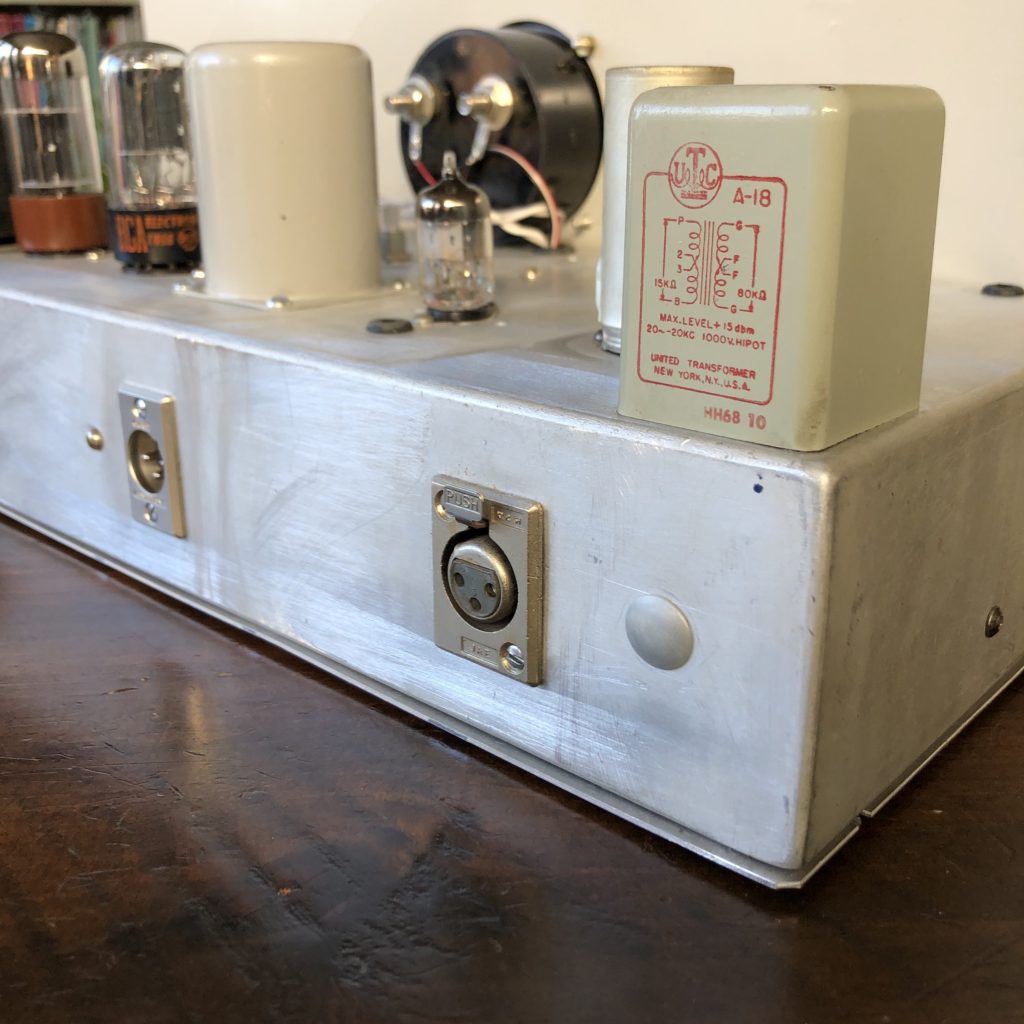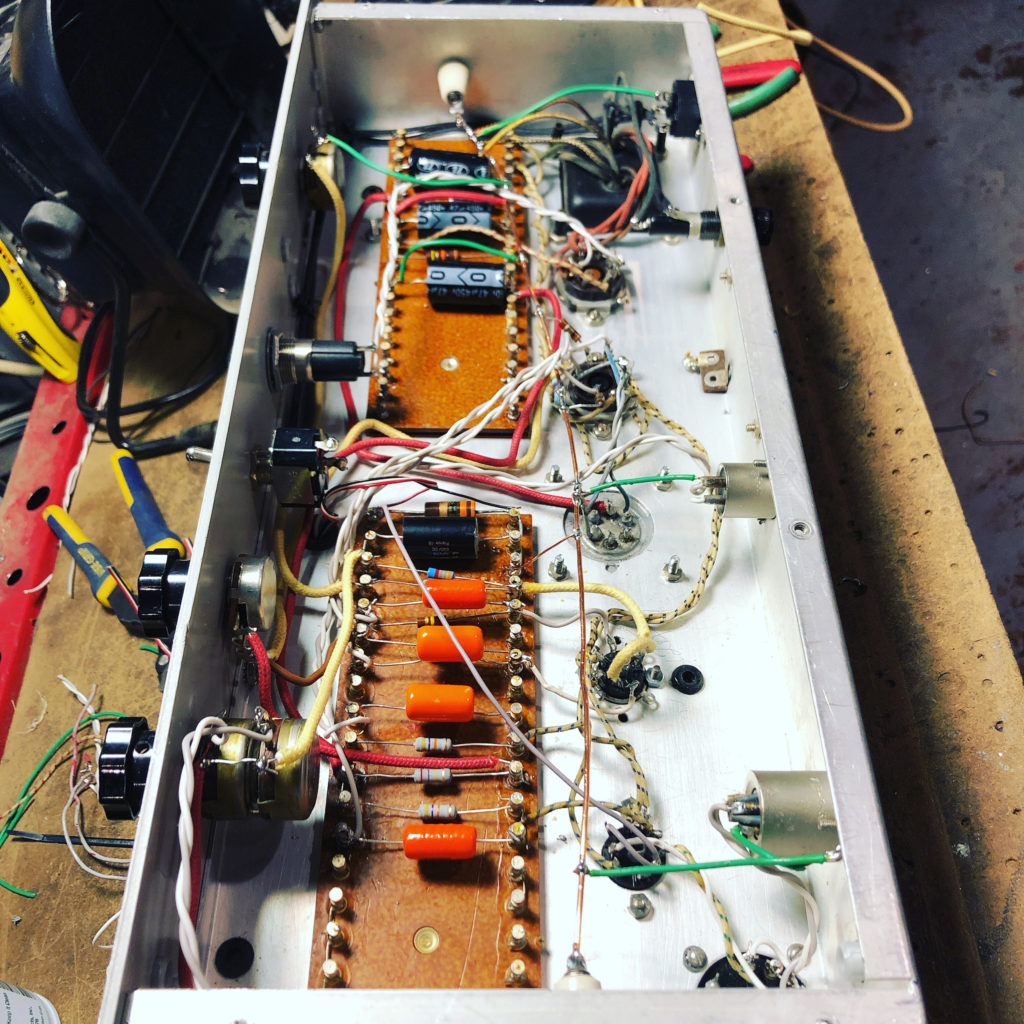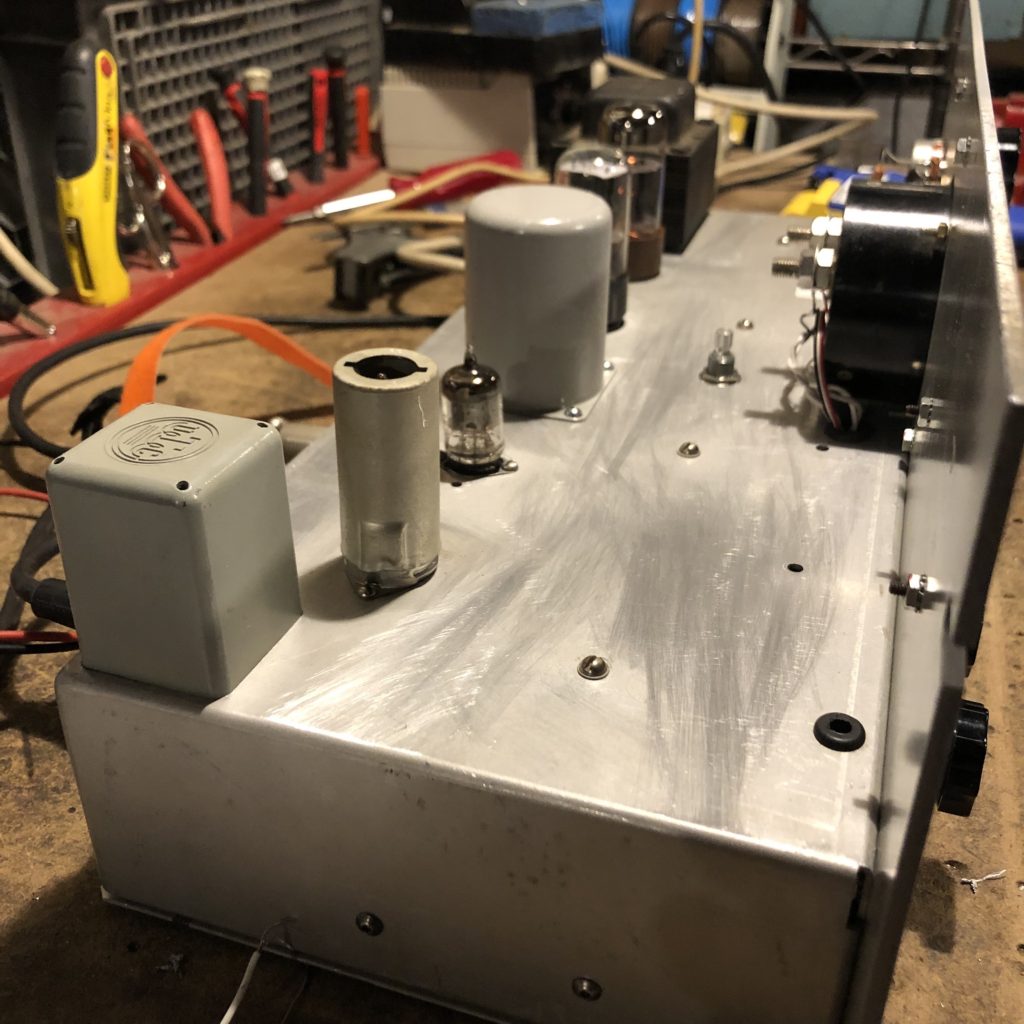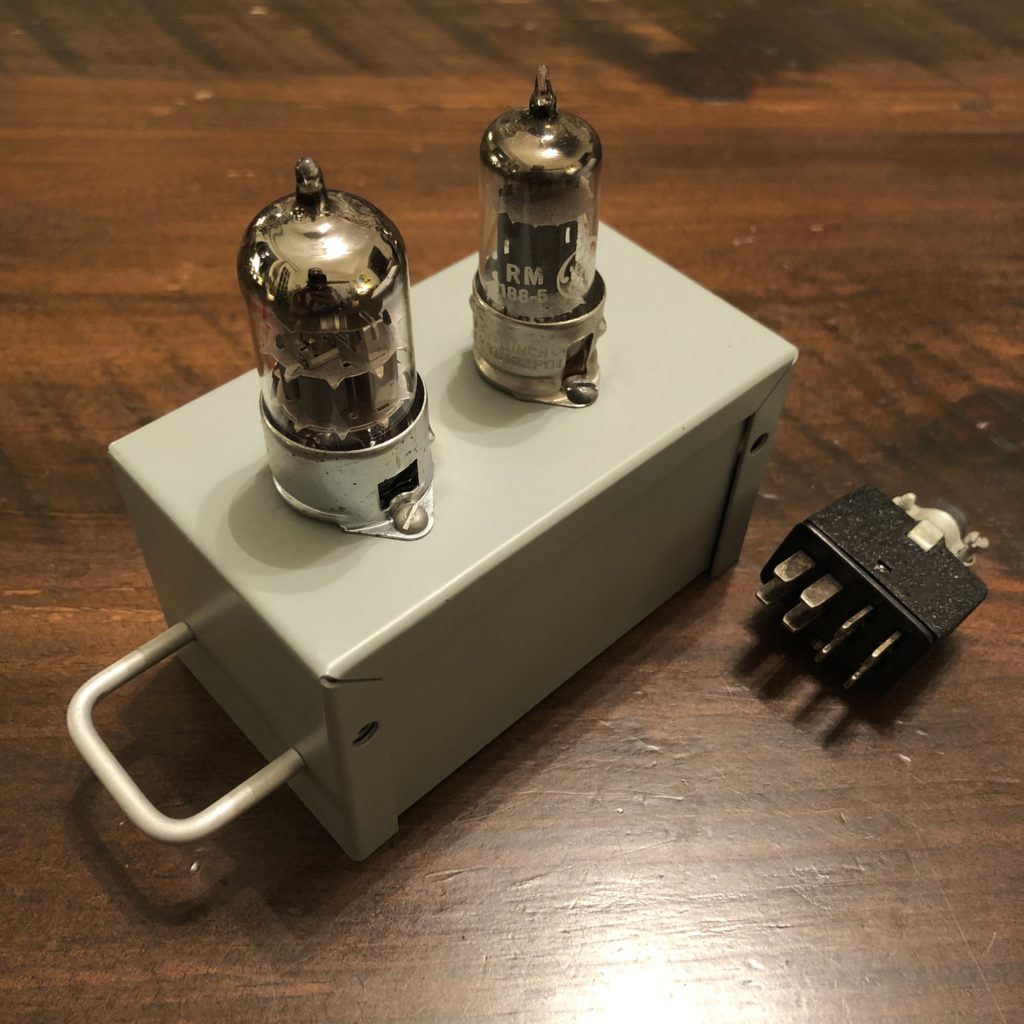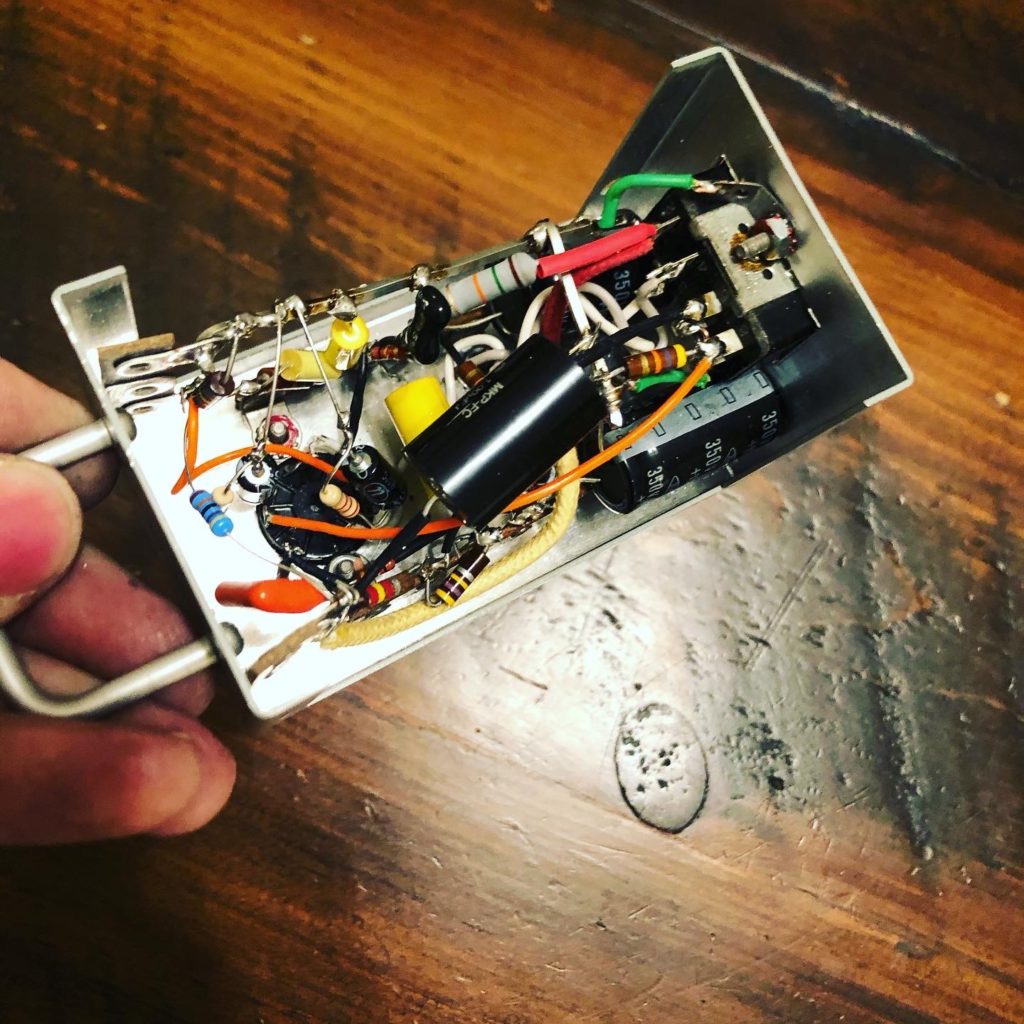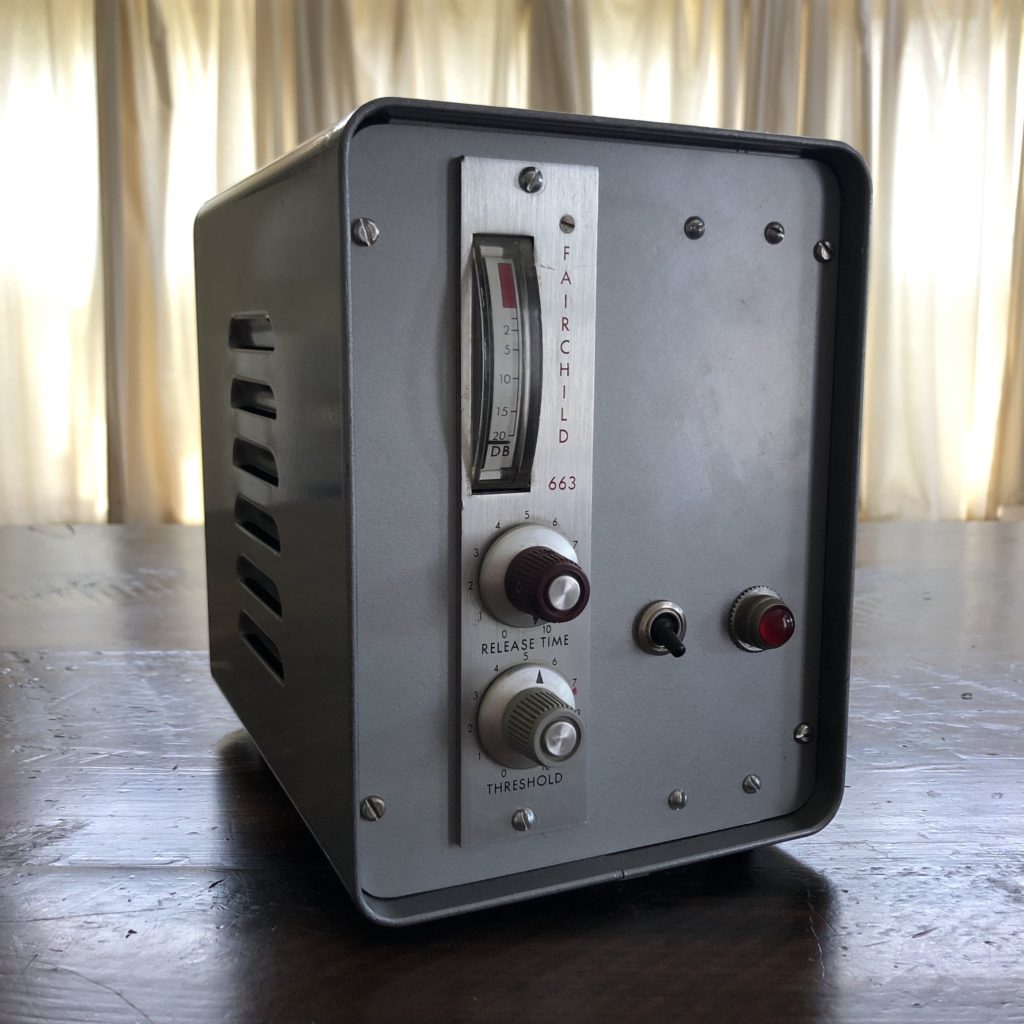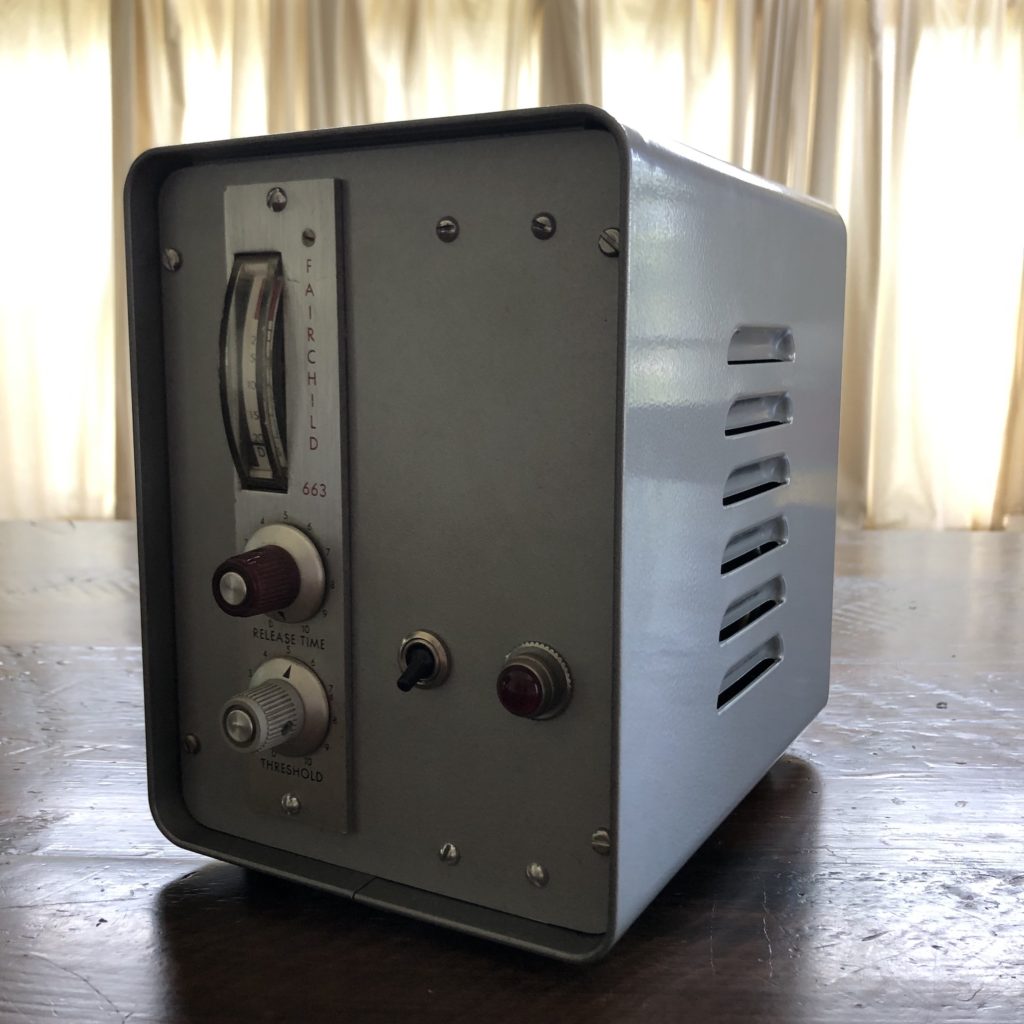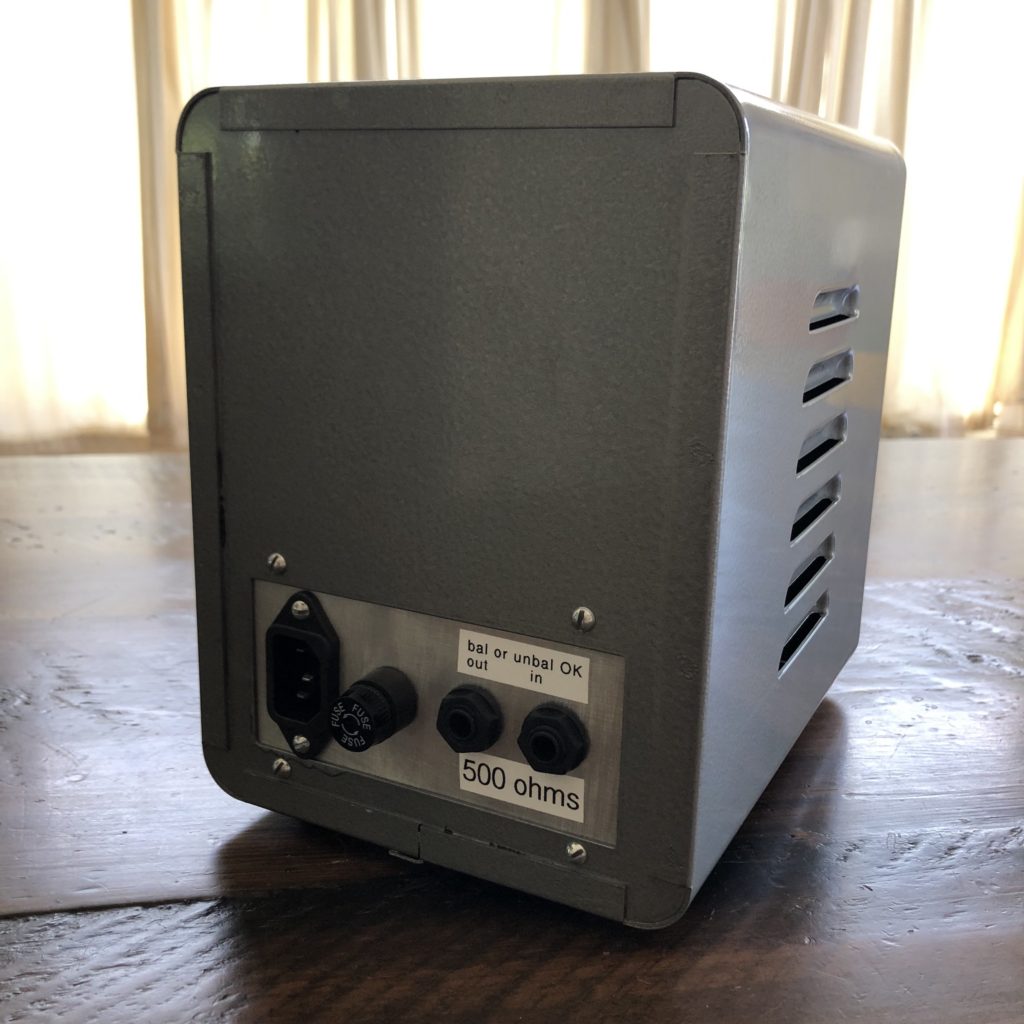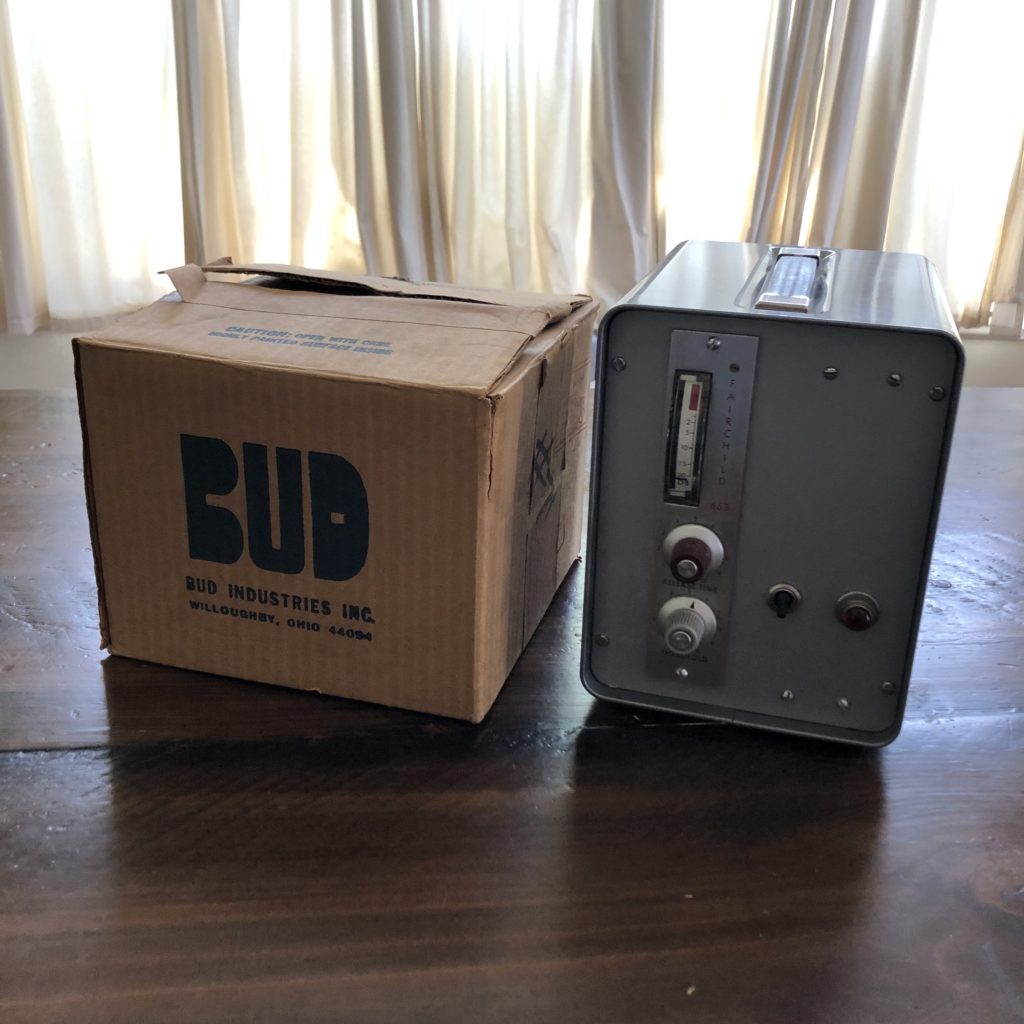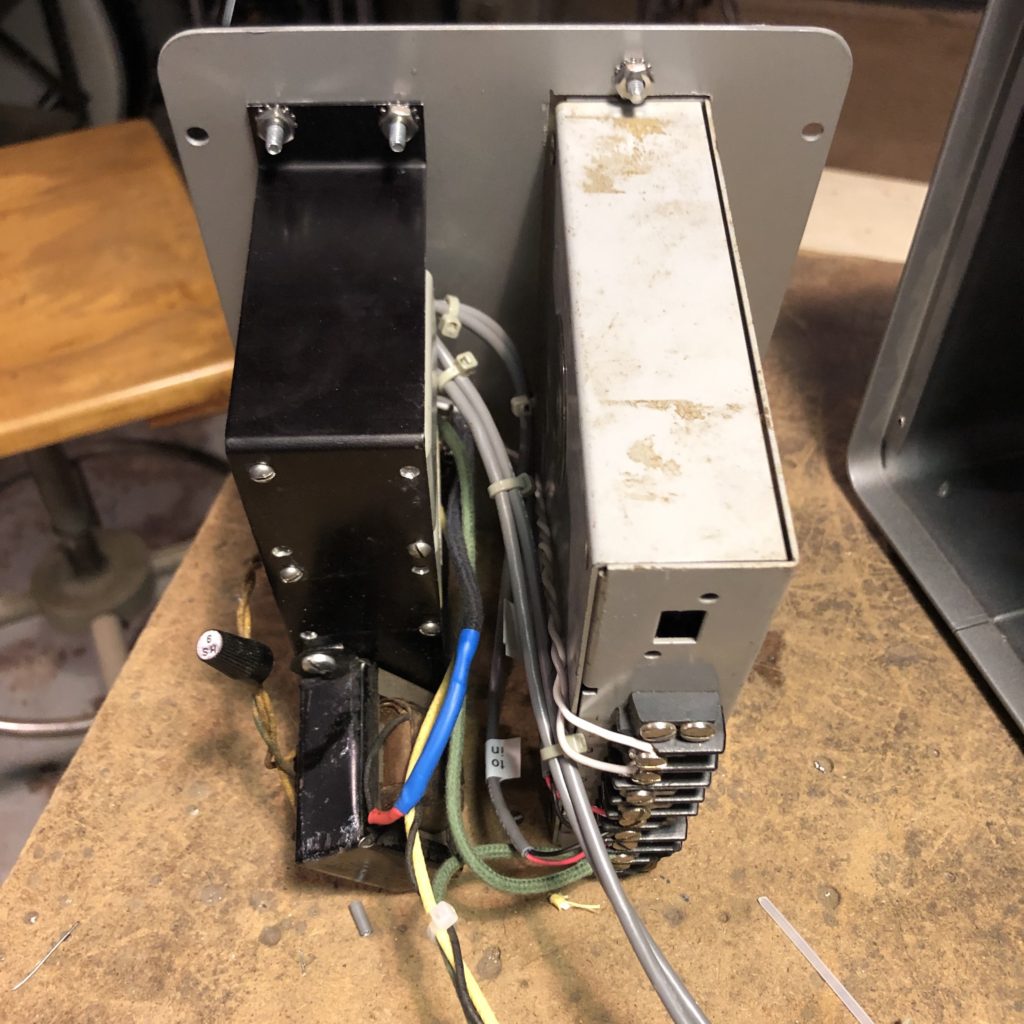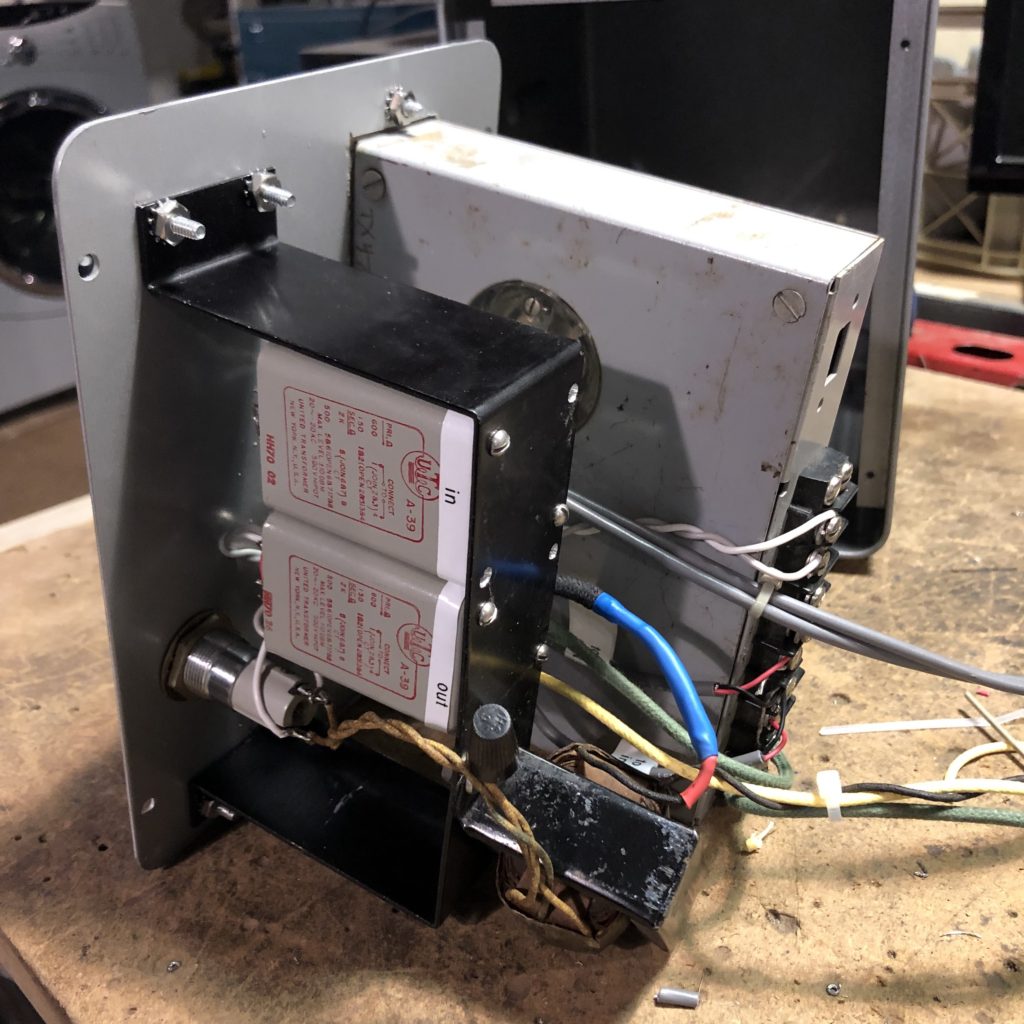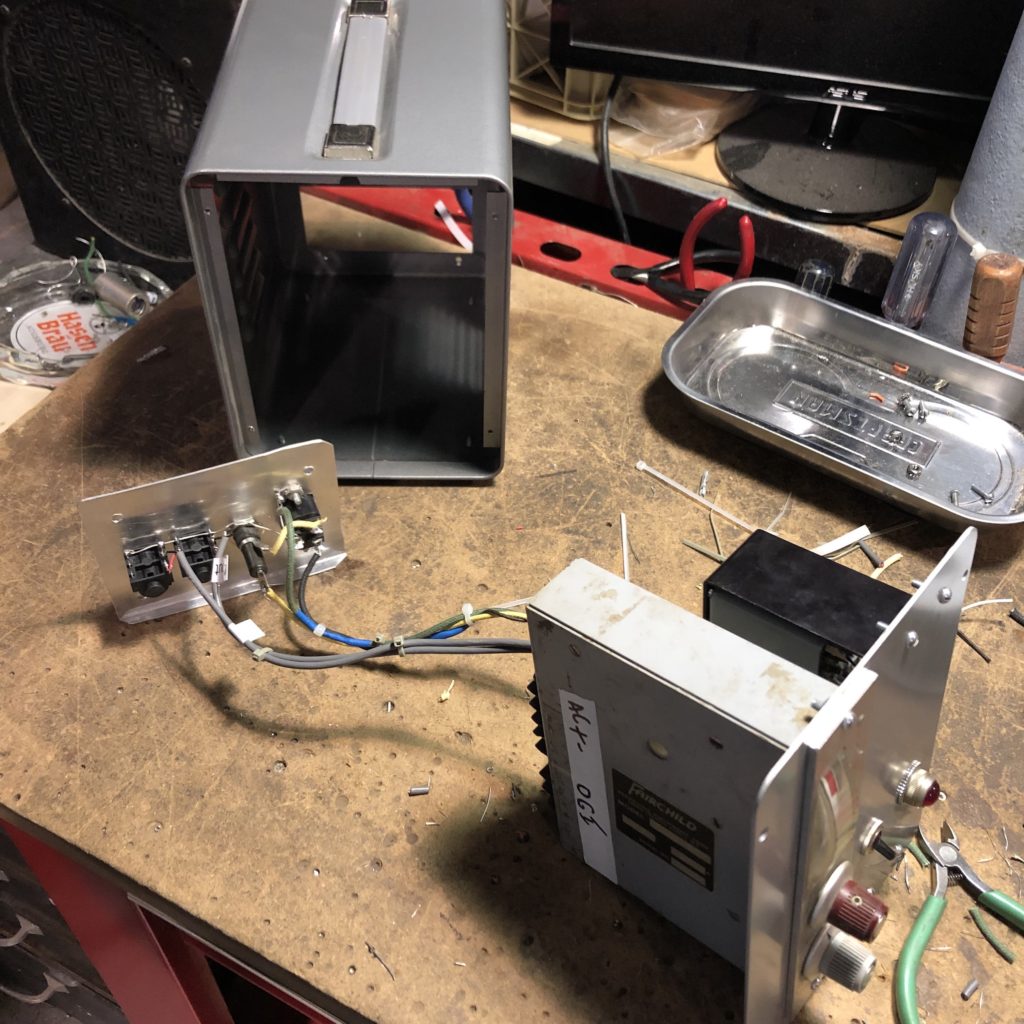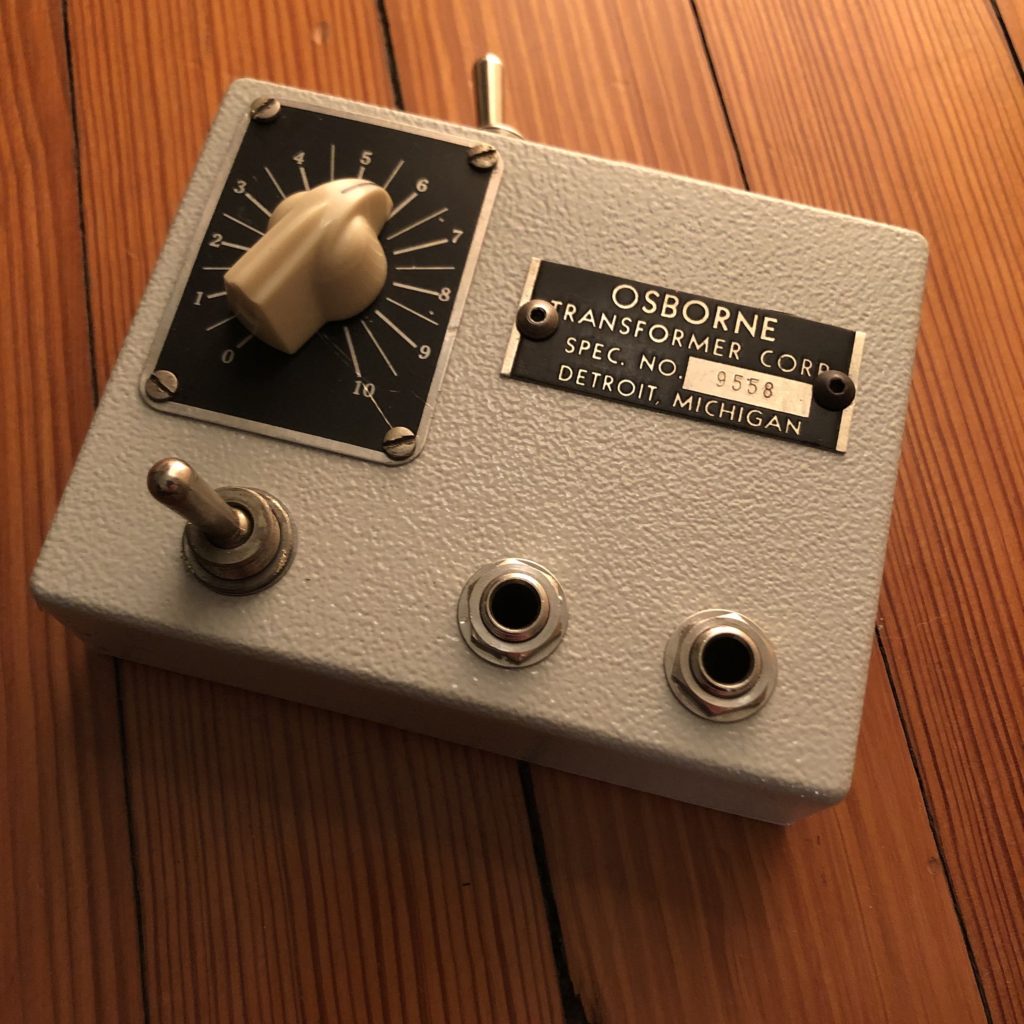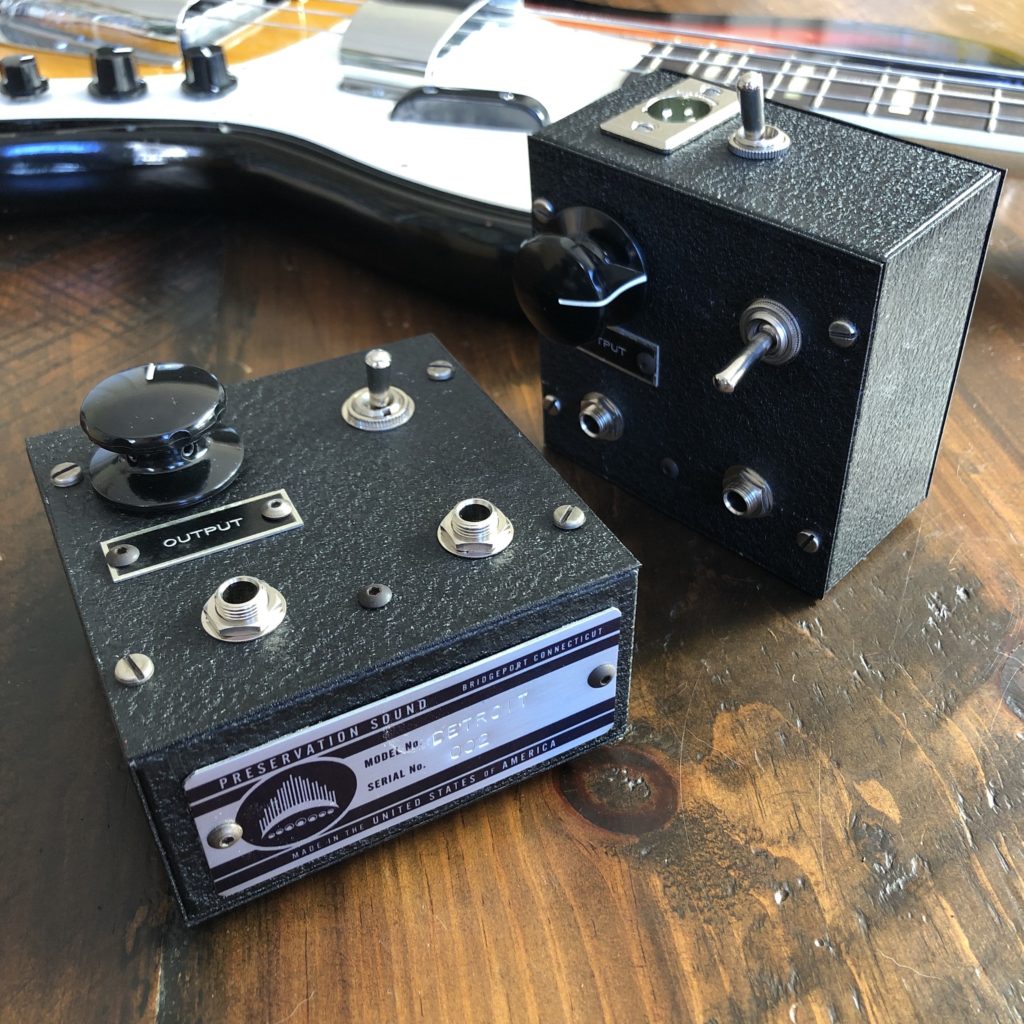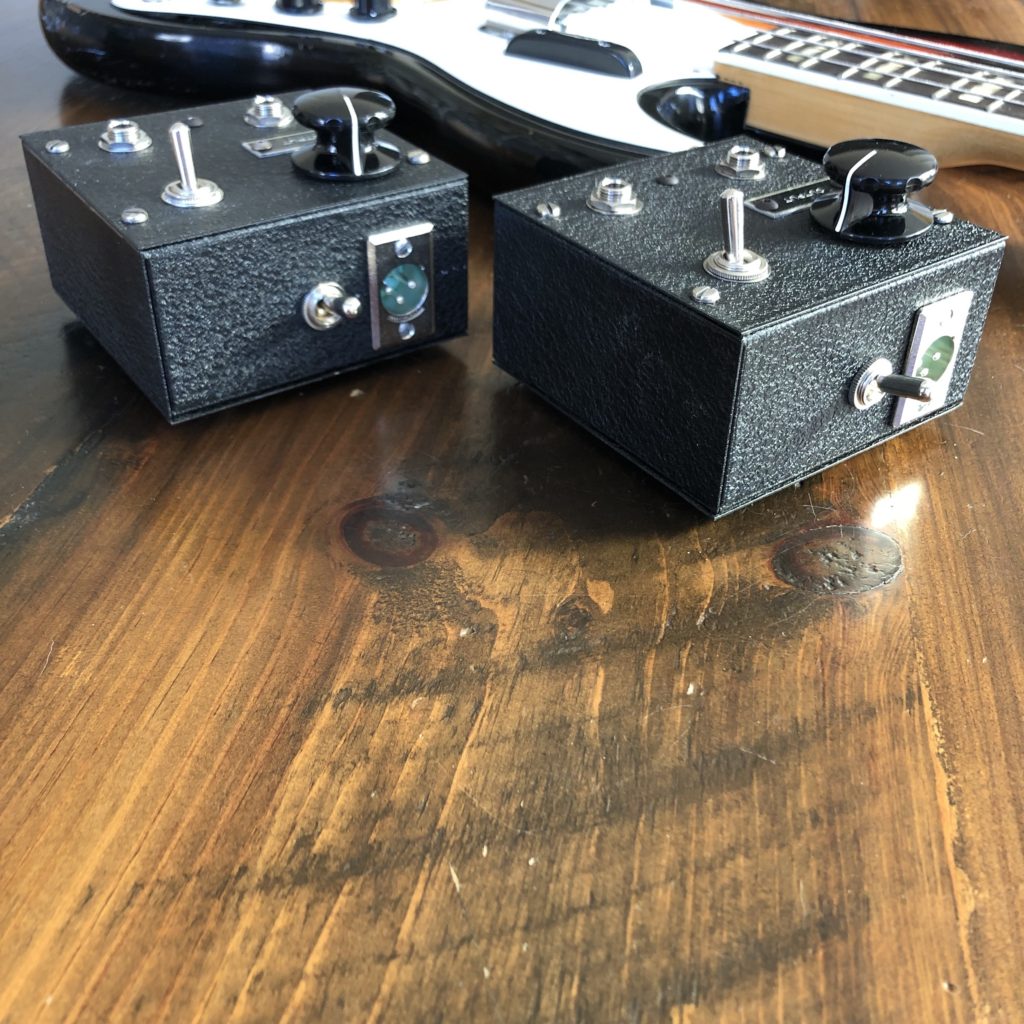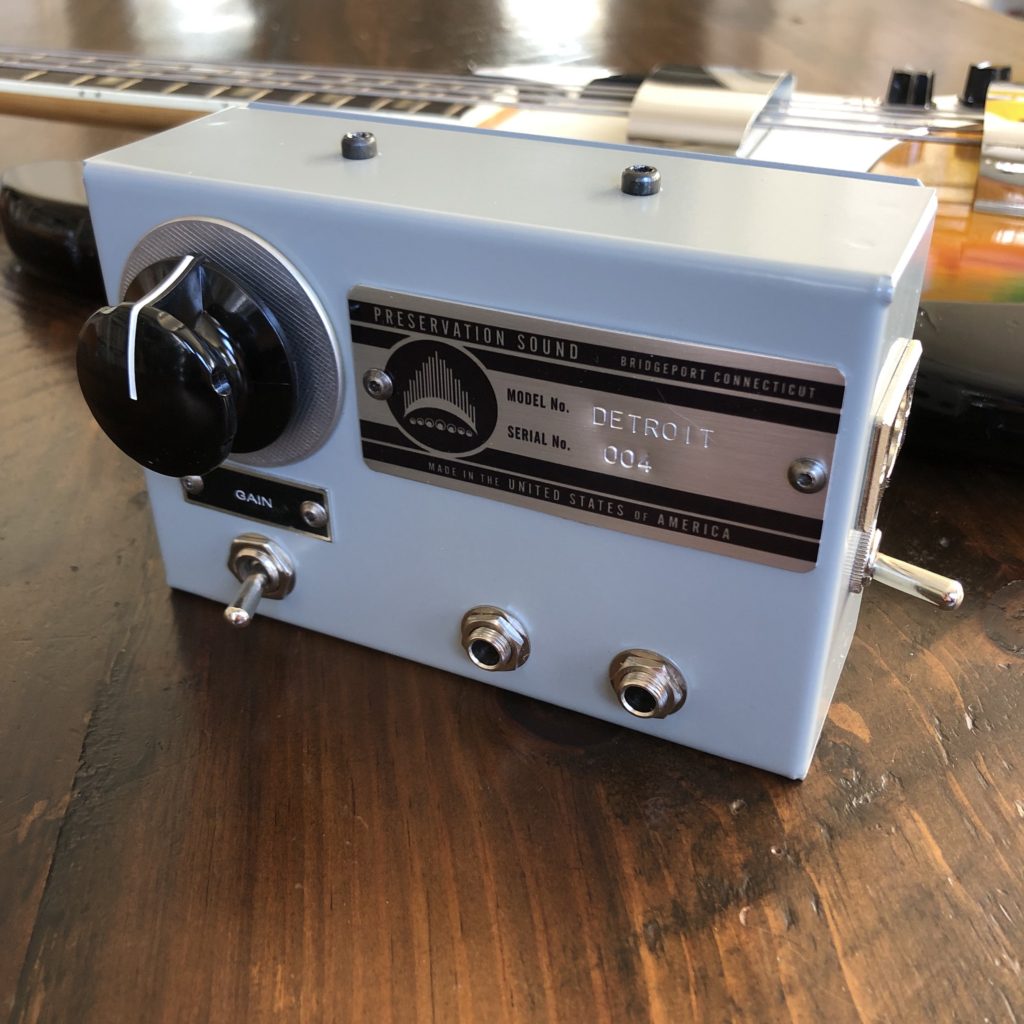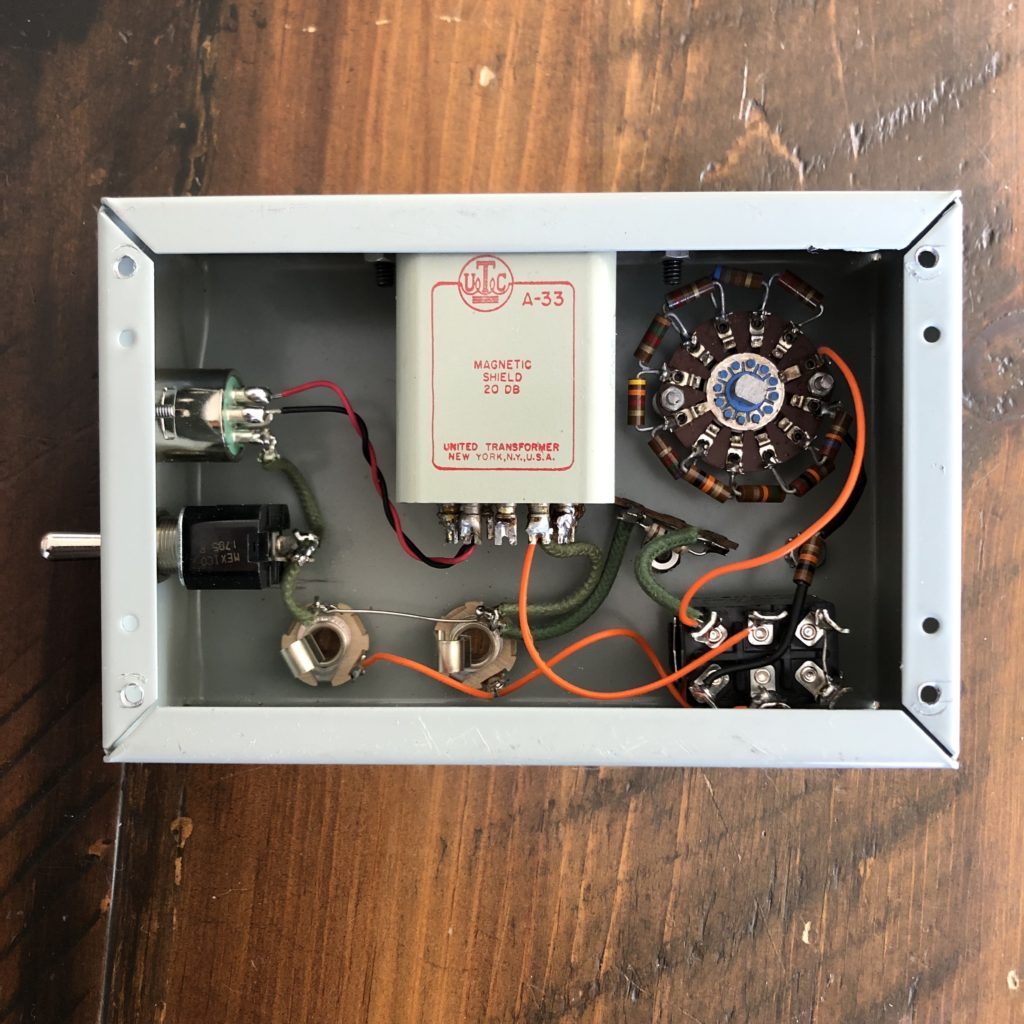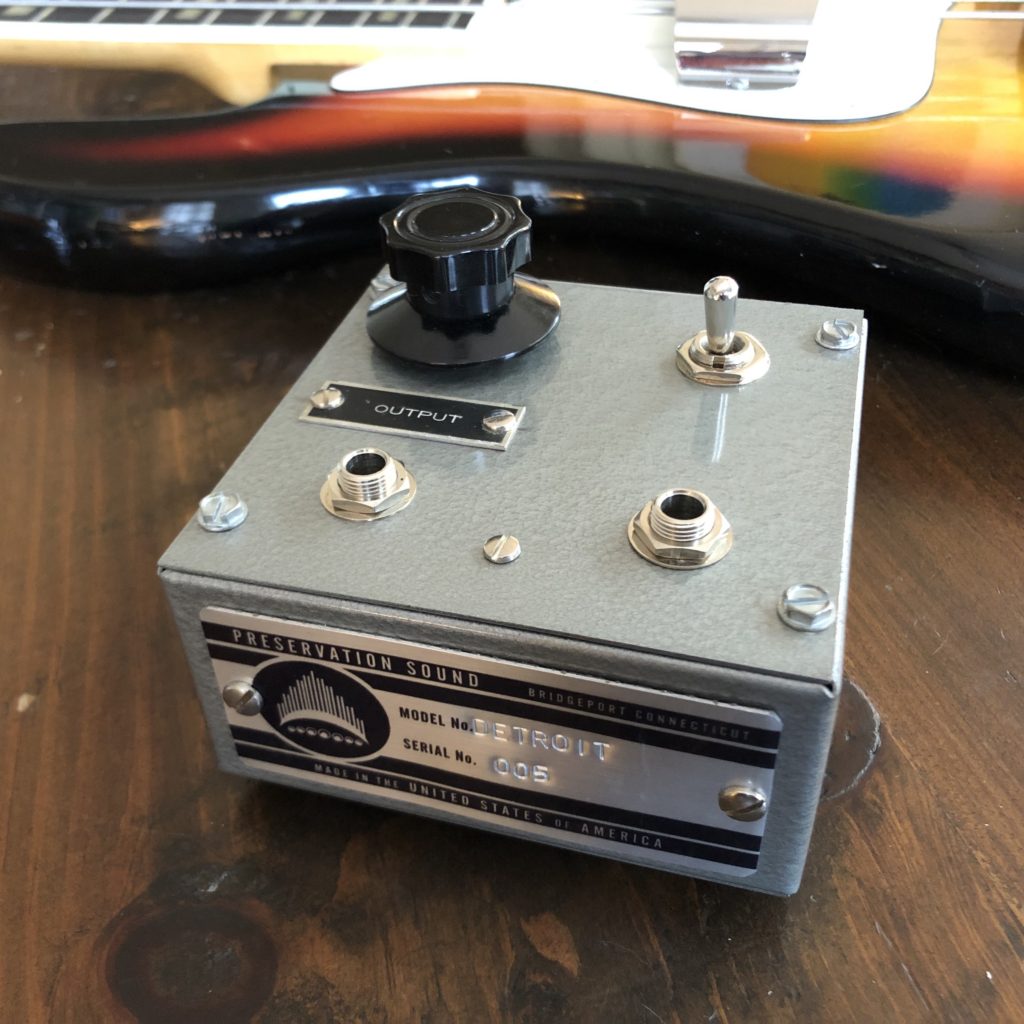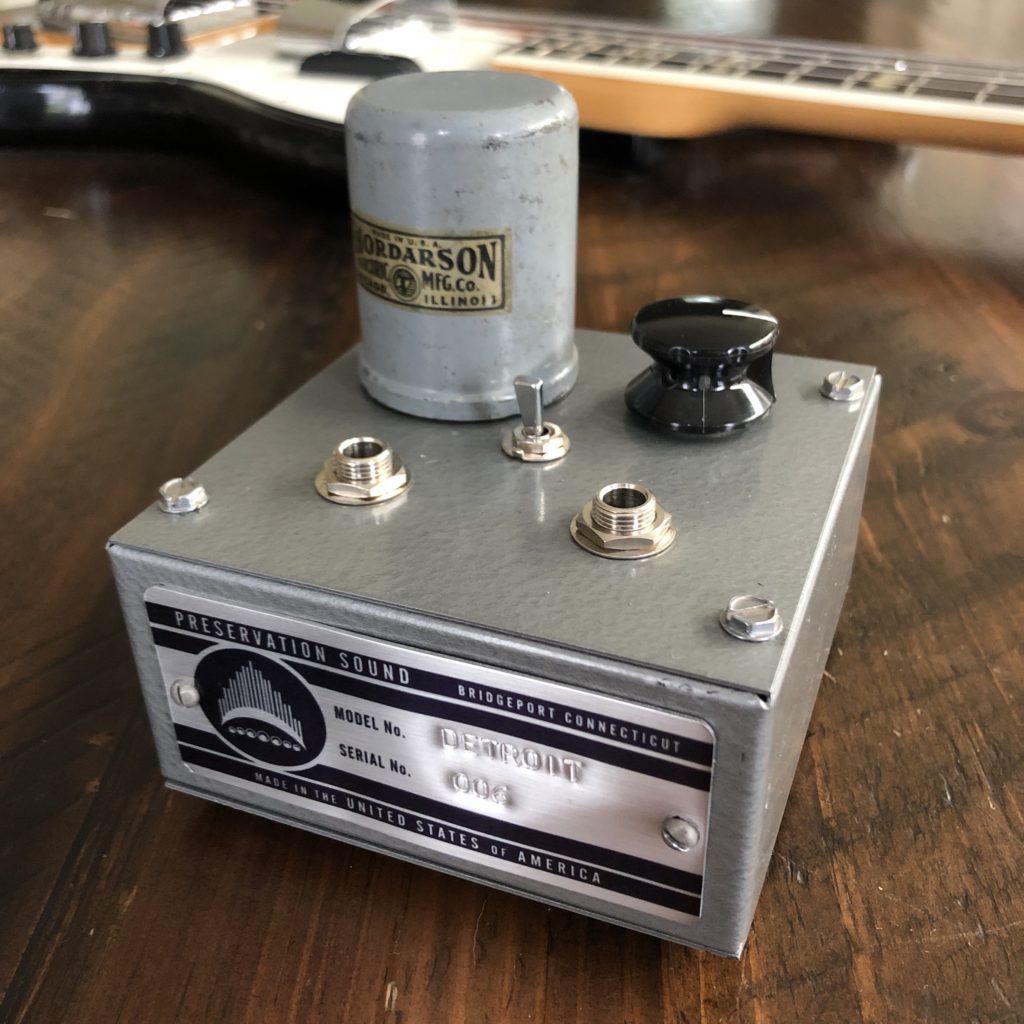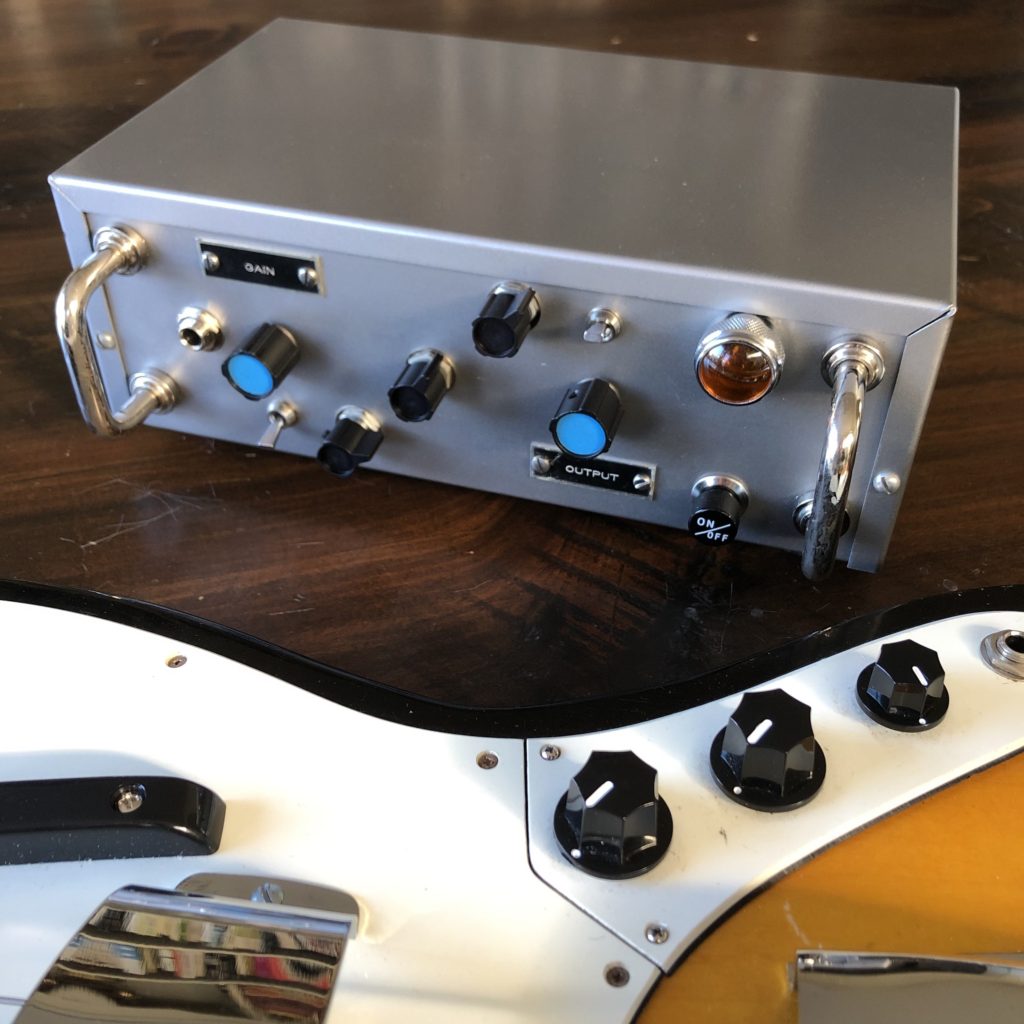
I tried to imagine the sort of custom instrument preamp that a top session player might have brought to a studio in The Seventies. Similar in principle to an Alembic F2B (part of many top players’ rigs for decades) but with many crucial improvements, this compact all-tube preamp starts with a classic Fender blackface low/mid/high/bright/vol feature set but adds the following: *master volume, *hi shift, and most importantly an additional output stage that can reliably drive a 10k input at high levels with no frequency loss.
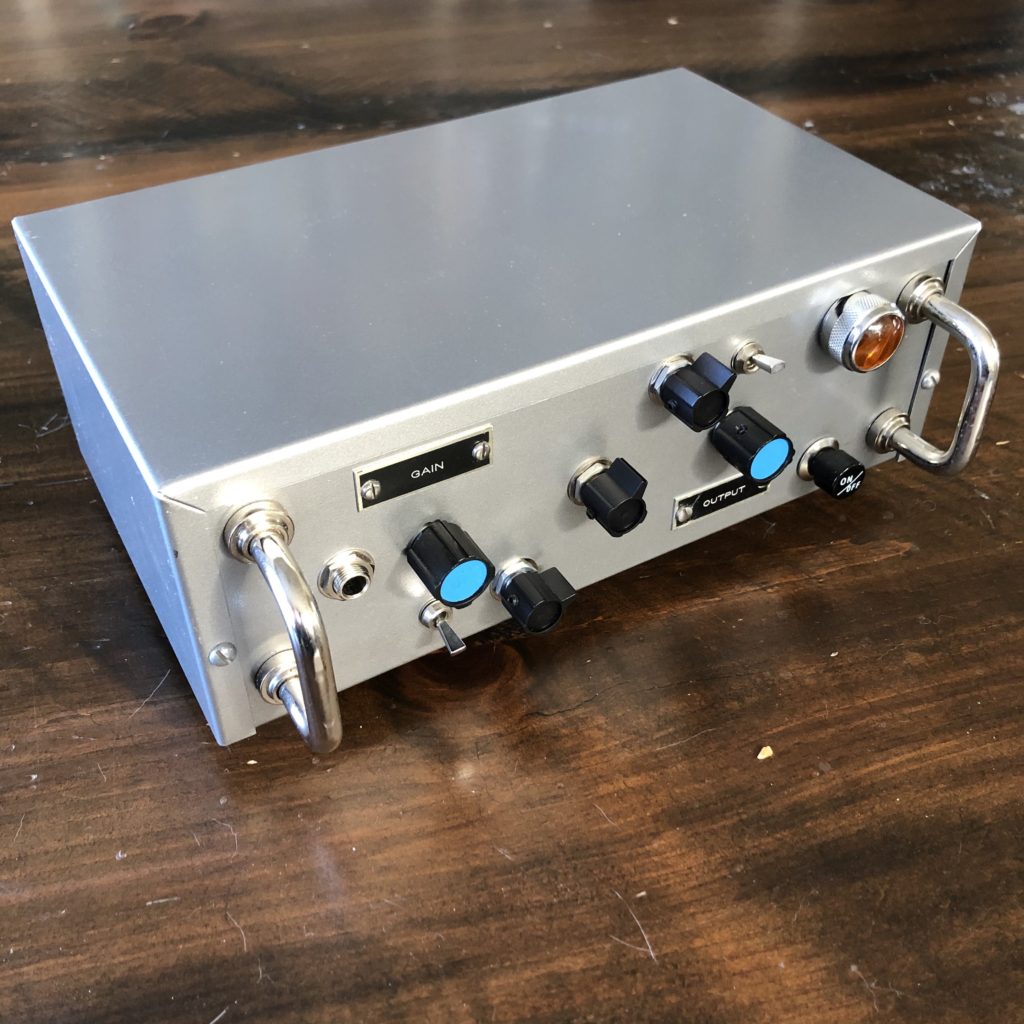
I learned a ton about the idiosyncratic Fender eq circuit by listening and fine-tuning this unit; the various compromises and ‘sweet spots’ that one can find with different cap and pot values. Basic three-stage filter power supply (output stage at 2nd leg) and c/t grounded AC heaters proved more than sufficient; the thing runs dead quiet (zero hum) other than a minuscule bit of reassuring hiss, as i used all NOS 1960s Allen Bradley carbon-comp resistors throughout (which id never do for a mic pre, but for vintage guitar/bass tone its part of the package, i think). The output stage runs at 350 volts, and the input and makeup stages are around 215, allowing for tons of headroom.
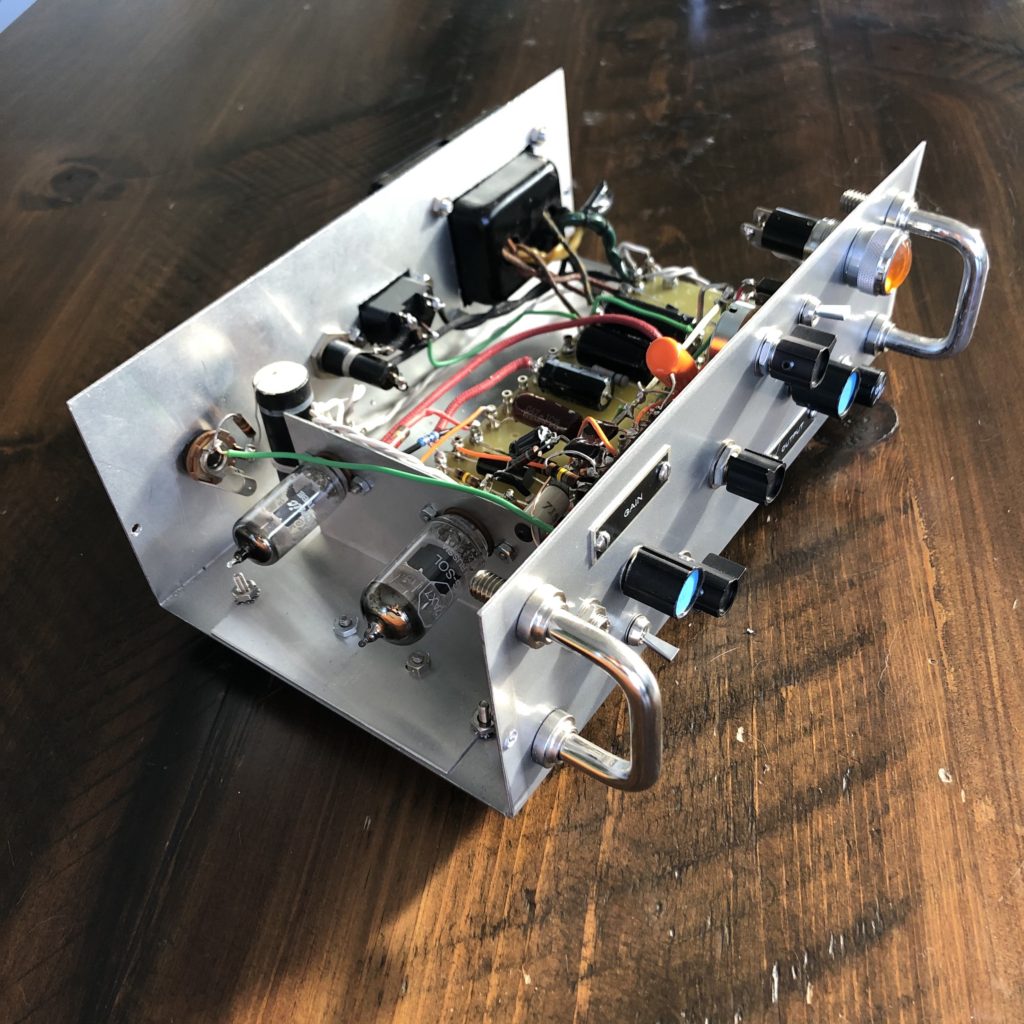
Above: the unit with the top cover removed. You can see the sub chassis with the 12AX7 and the 6C4 output driver; a huge Aerovox output cap; and the rugged fiberglass turret-board point-to-point construction.
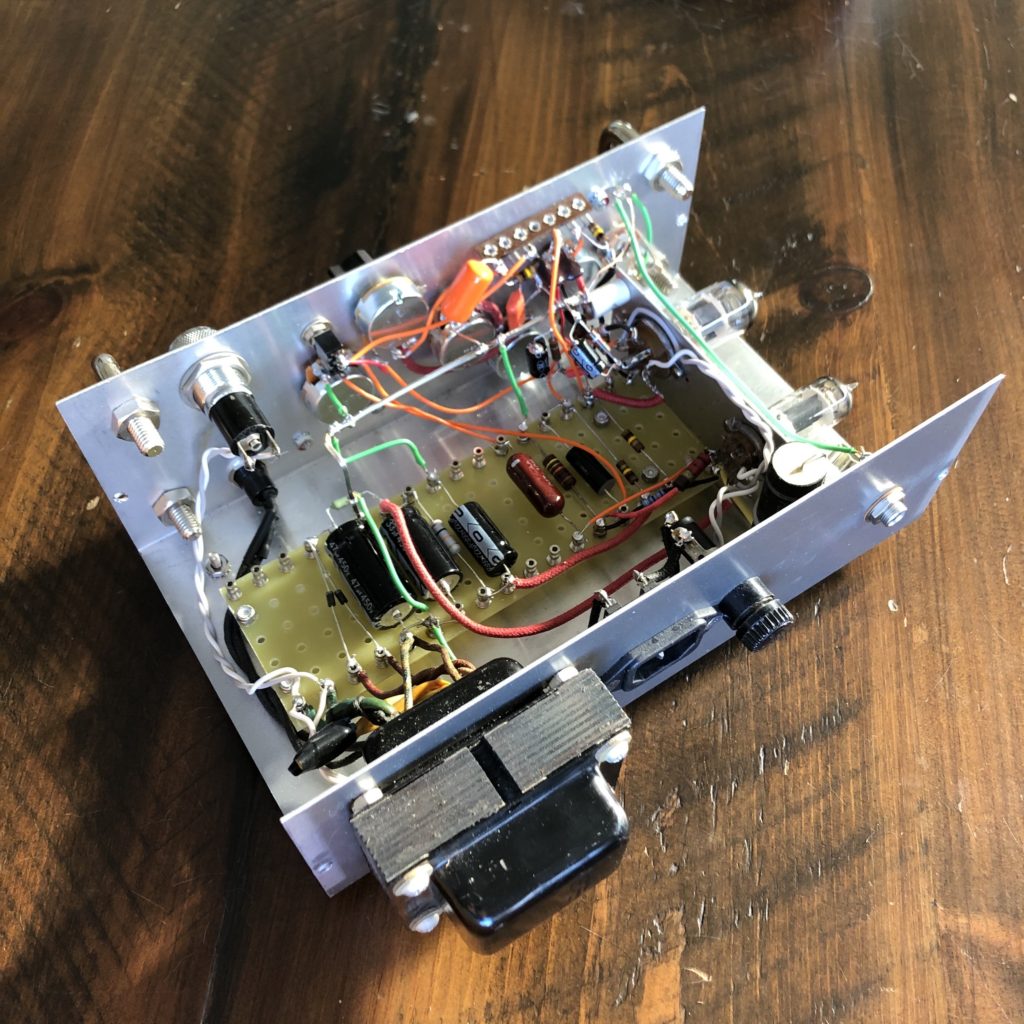
Above: another internal view. All of the hardware bits are DakaWare, API, and Smith NOS parts from the 60s and 70s, all from my inventory. Signal wiring (orange) is stranded silver 22ga wire and the ground wire (green) is 18ga solid copper.

How does it sound? With bass guitar its absolutely magical- every classic electric bass sound is just there at your fingertips; very inspiring to play thru. Really sounds like a ‘finished’ bass track with no additional processing. The whole package is compact enough to fit in many gig bags. As for the name? “Super” as the circuit owes much to my beloved Fender Super Reverbs, and “Hugh” as an homage to one of my all-time favorite session greats Hugh McCracken.
